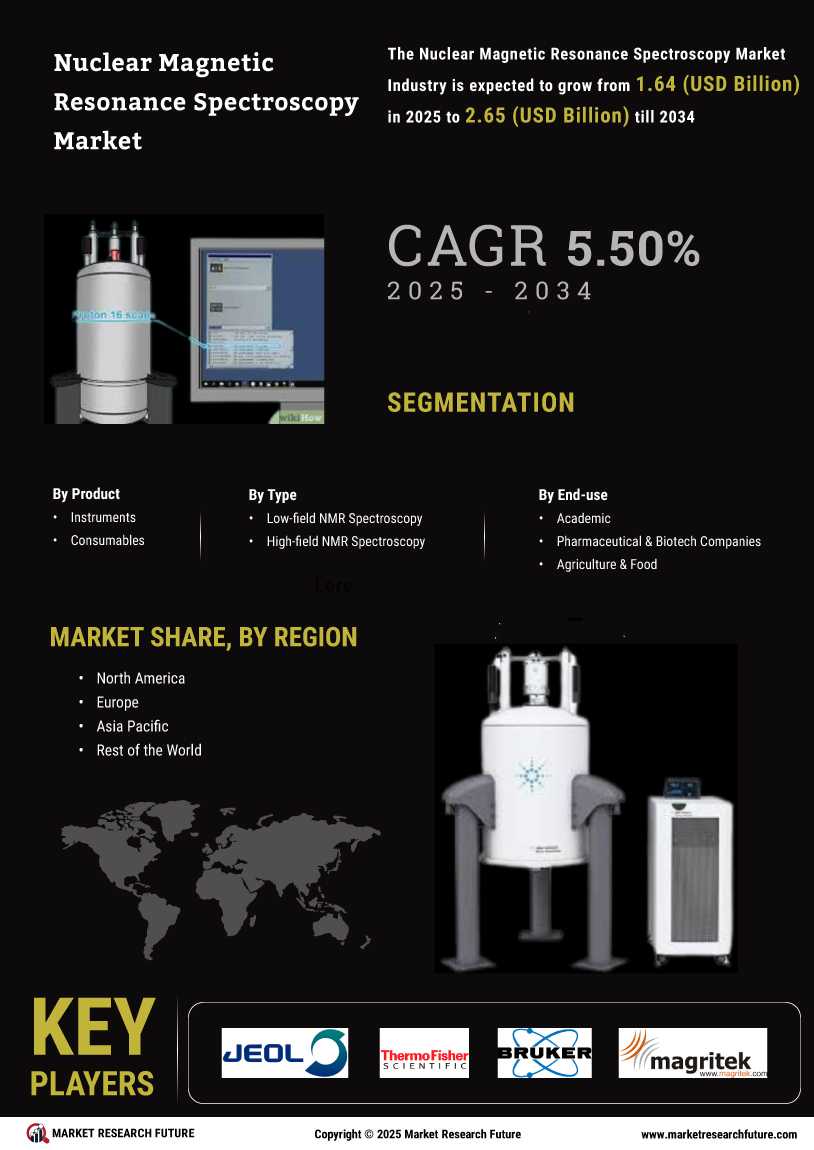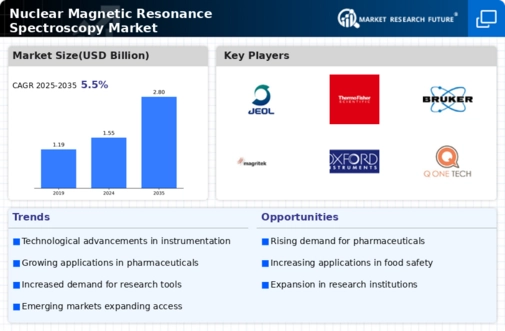Leading market players are investing heavily in research and development in order to expand their product lines, which will help the market of Nuclear magnetic resonance spectroscopy, grow even more. Market participants are also undertaking a variety of strategic activities to expand their global footprint, with important market developments including new product launches, contractual agreements, mergers and acquisitions, higher investments, and collaboration with other organizations. To expand and survive in a more competitive and rising market climate, Nuclear magnetic resonance spectroscopy industry must offer cost-effective items.
Manufacturing locally to minimize operational costs is one of the key business tactics used by manufacturers in the global Nuclear magnetic resonance spectroscopy industry to benefit clients and increase the market sector. In recent years, the Nuclear magnetic resonance spectroscopy industry has offered some of the most significant advantages to medicine. Major players in the market of Nuclear magnetic resonance spectroscopy, including JEOL Ltd., Thermo Fisher Scientific Inc., Bruker, Magritek, Oxford Instruments, Nanalysis Corp., Anasazi Instruments, Inc., QOneTec, Advanced Magnetic Resonance Limited and others, are attempting to increase market demand by investing in research and development operations.
High-tech tools and systems are offered by Oxford Instruments plc (Oxford). The business produces, sells, and conducts research and development on technological instruments. It offers cutting-edge nanotechnology solutions to many different end markets. AFM, electron microscopy, deposition and etch tools, low temperature systems, optical imaging, nuclear magnetic resonance, MRI and CT services, modular optical spectroscopy, and X-ray are some of the company's main products. The company's products are used in industries such advanced manufacturing, geology, petrology, mining, pharma, agriculture and food, automotive and aerospace, bio imaging and life sciences, energy generation and storage, semiconductors, microelectronics, and data storage.
The business is present throughout Asia, North America, China, Japan, and Europe. Abingdon, Oxfordshire, in the United Kingdom, serves as the home of Oxford.
Bruker Corp (Bruker) designs, manufactures and sells scientific instruments, and analytical and diagnostic solutions. Bruker offers products used by customers in life science research, pharmaceuticals, biotechnology, surface measurement, CBRNE detection, preclinical imaging, food, agriculture, applied markets, cell biology, clinical research, microbiology, in-vitro diagnostics, nanotechnology, and material science research. It offers mass spectrometry technologies, micro tomography, magnetic resonance technologies, gas and liquid chromatography, triple quadrupole mass spectrometry technologies, atomic force microscopy, X-ray technologies, spark-optical emission spectroscopy, stylus and optical metrology technology, fluorescence optical microscopy and infrared and Raman molecular spectroscopy technology platforms.
The company operates technical and manufacturing centers in Europe, Asia-Pacific and North America. Bruker is headquartered in Billerica, Massachusetts, the US.


















Leave a Comment